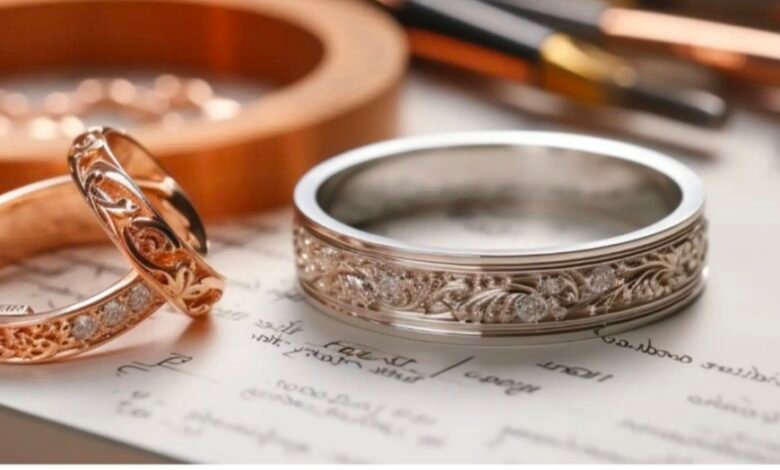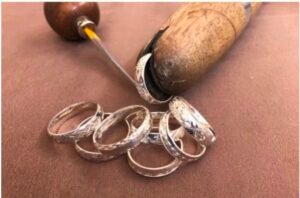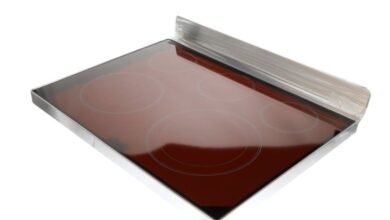Four frequently asked questions about jewellery engraving

Jewellery engraving is an ancient and delicate technique that blends art and technology with each other to create beautiful and unique crafts. Whether you are a beginner in jewellery engraving or a master jewellery engraver, there are always many questions and challenges that you will encounter along the way of continuous practice. Here are a few of the most common questions and their answers that I have compiled about carving jewellery, in the hope that they will help you even more on your carving journey.
What are the basic tools for engraving jewellery?
Obviously, carving jewellery requires tools to carve hard jewellery, which is not possible by hand alone, so the technique of carving jewellery, as it has evolved, has resulted in the development of a range of specialist tools.
1. Engraving knife
The types of engraving knives include fine engraving knives, flat knives, round knives, etc. There are different shapes and sizes of knives to adapt to different fine engraving and cutting needs, to meet different design needs.
2.Grinding stone
Grinding stones are used for polishing and sanding jewellery. There are coarse and fine grinding stones, which are used for polishing and sanding to remove traces of jewellery after engraving and make the surface smooth.
3.Hammer
Hammers are classified into jewellery hammers, mallets, etc. They are used in certain engraving techniques to effectively reduce the difficulty of engraving, and help the engraver to control the strength and become less labour intensive.
4.Jig
Jigs are tools used to hold jewellery in place, and there are many types of jigs to keep the jewellery stable during the engraving process, ensuring accuracy and preventing the jewellery from slipping and the engraving becoming more difficult.
5. Magnifying glass or microscope
A magnifying glass is used to magnify the jewellery being engraved, helping the engraver to observe the details of the jewellery being engraved for any mistakes. I recommend a stereo microscope, when dealing with tiny details, a stereo microscope can provide a clearer view, can immediately find the problem, adjust the angle of engraving, make up for the problem of engraving.
What are the safety precautions that should be taken during the engraving process?

1. Wear good protective equipment
If your engraving tool is sharp enough, you should take greater care to protect yourself. In addition, engraving jewellery can be dusty and crumbly, so you will need to wear protective equipment such as safety glasses, masks and gloves.
2. The work area should be clean and tidy
You should also make sure that your worktop is free from clutter, not to mention very messy, or else your tools may slip off during your carving process, which not only affects your carving, but may also injure yourself.
3. Proper use of engraving tools
You are using carving tools for carving, you should read the instructions beforehand, and check whether the tool is in a good state of normal use, if all done, then use the tool to carve out your favourite pattern, bold creation it.
4. Handle chemicals with care
You need to use acidic cleaners etc. to clean the carving tool afterwards, and if it is an electric carving machine, you should clean it after switching off the power to prevent the machine from starting suddenly and putting yourself in harm’s way. You should also clean in a well-ventilated area to effectively reduce accidents.
What are the tips for engraving details?
Engraving in detail is the most challenging part of jewellery engraving, so let me tell you what are the tips for engraving details.
1. Patient carving
Jewellery carving is a relay race on patience, whether it is the overall outline of the carving, or in the details of the carving, need to work carefully and cautiously, need time to slowly carve, every knife every strength can not be negligent, more can not rush.
2. Use the right tools
The use of different carving tools to adapt to different carving needs, especially in the details of carving, to choose the right carving knife, can adapt to the fine and complex details.
3. Repeatedly observe the details
You can use a magnifying glass or microscope to help you better observation, repeated stops to check the details of the carving, to ensure that the details of the carving are in line with your expected design.
4. Use light and shadow to observe
You can also observe the details and effects of your carving through different light, to help you find the details need to be adjusted, but also from the overall cut into the observation, to ensure that the details and the whole in the design can be harmonious and unified.
What are the common carving mistakes?
1. Unreasonable design
In the carving before the beginning of the design is not fully considered, may be the size, pattern unreasonable, material and other issues, resulting in unreasonable design on the carving, will make the later modification difficult.
2. Unbalanced strength
Beginners are often in the carving strength control is not so sophisticated, it will be in the carving strength control is not appropriate, resulting in carving traces are not so uniform.
3. Negligence of details
A bit of jewellery carving from a distance feel okay, but a close look at the details feel very bad, will leave a bad impression. So in the carving process, the negligence of the details is also a very serious problem, do not pay attention to the details, will affect the final effect.
Conclusion
In the process of jewellery engraving, engravers are faced with many problems, including tool selection, safe operation, detail engraving, wrong engraving problems, etc. By solving these problems step by step, engravers can not only improve their engraving skills, but also ensure that the jewellery work has its own artistic beauty. Whether you are a beginner in jewellery engraving or an experienced master, continuous learning, practice and communication are the secrets to improve your engraving skills, but also maintain patience and creative thinking, you will be able to create unique works of art.



